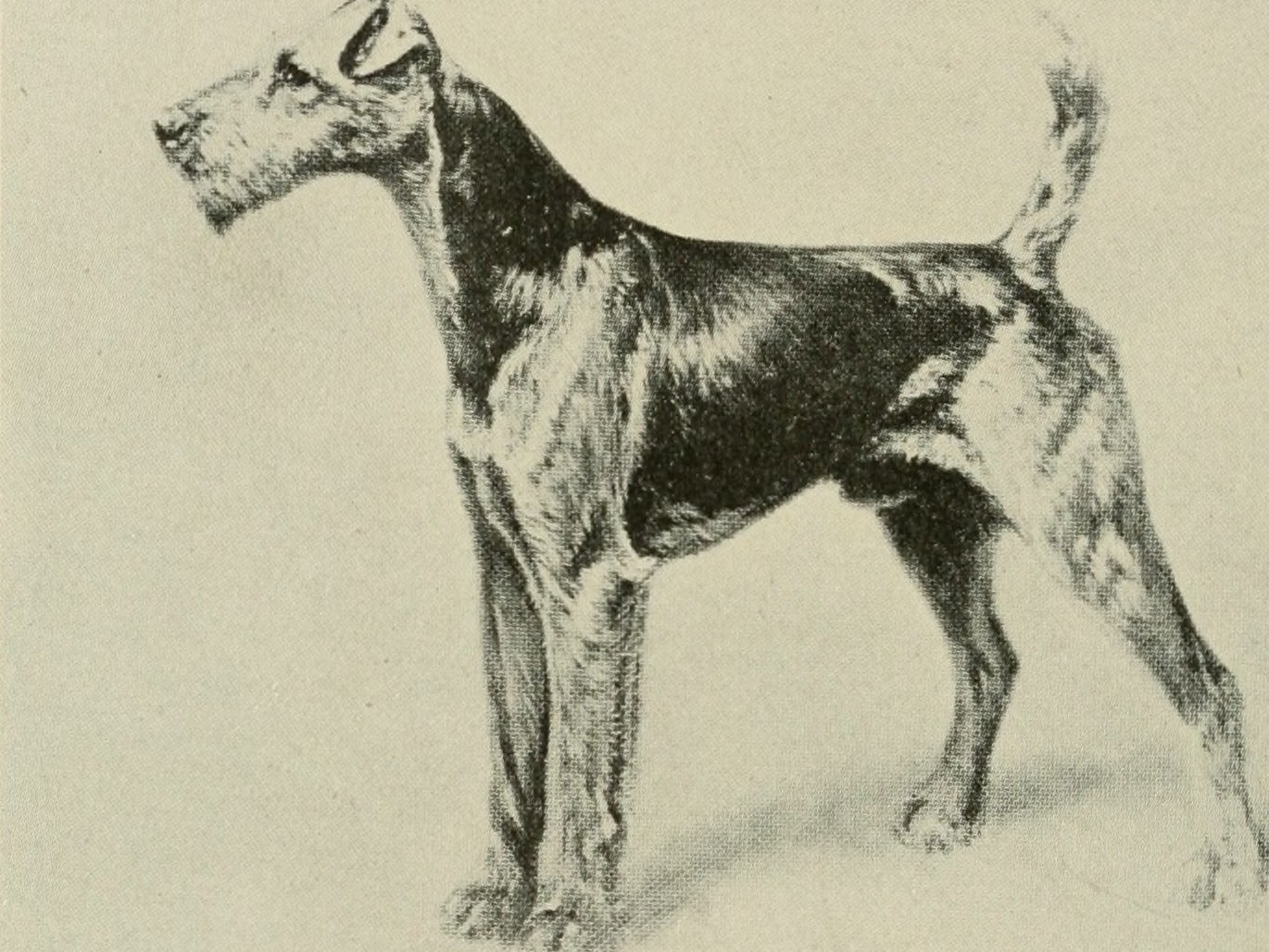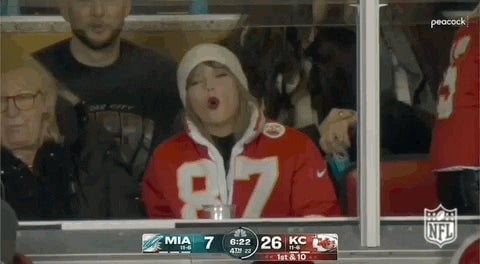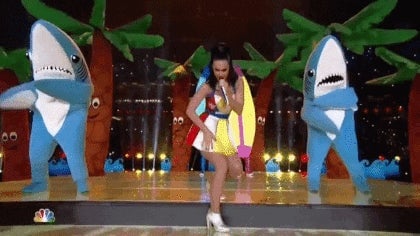Halftime shows: The main event
It's a sports show.

Sports or show?
Suggested Reading
The first ever halftime show in American football overshadowed the game, on purpose. The teams were there as an inexpensive diversion, the real business was in selling the expensive dogs that paraded around during the break—a proto Puppy Bowl, of sorts.
Related Content
In the 1990s, the Super Bowl halftime show started to draw more viewers than the game itself by featuring a performance from the biggest pop artists in the world. Since then viral videos like the wardrobe malfunction and “Left Shark” have raised expectations for the extravaganza.
But for such a big stage, it has had trouble attracting artists. It’s a short, high-risk, unpaid gig that offers little chance to demonstrate musicianship, while opening performers up to jokes, gaffes, and political approbation. Which, of course, is why so many of us tune in (well, if you’re a Swiftie, this year may give you other reasons to watch the game).
By the digits
100 million: Viewers of Michael Jackson’s Super Bowl halftime show in 1993
118.7 million: Viewers of Rihanna’s 2023 halftime show, the most watched in history
~$10 million: Production costs for the Super Bowl halftime show (performers are not paid)
13 minutes: How long Usher said his 2024 halftime show will last, which is pretty average
90 seconds: Amount of time that Michael Jackson stood in silence on the stage during his 1993 halftime show before any music started
88: Grand pianos on stage at the 1988 Super Bowl halftime show, featuring Chubby Checker and the Rockettes
Origin story

Show dogs
The first pro football halftime show in 1922 was all about the dogs—and seeped in controversy that is still playing out in the NFL today. Walter Lingo owned a kennel of Airedales and bred a new breed called the King Oorang, which he believed to be the wonder dog.
To drum up publicity, Lingo teamed up with future NFL Hall of Famer Jim Thorpe to start an NFL franchise, the Oorang Indians, made up of Native American players in LaRue, Ohio. Football was not yet a craze (nor had the league started to come to terms with its cultural appropriation of Native Americans), so it made for a cheap investment in self-promotion—and kennel maintenance from his players. The team gained a lot of attention for its name and players, but the main attraction was the King Oorangs during halftime.
As the Oorang Airedale business boomed, each dog sold for more than the entire franchise initially cost, although Thorpe was a considerable expense as player-coach at $500 a week—in today’s dollars, about $400,000 a year. But when the Great Depression hit, Lingo struggled to make sales and ended up euthanizing hundreds of dogs.
Quotable
“But when you become a mom, there’s something that just happens where you feel like you can take on the world. You can do anything, and the Super Bowl is one of the biggest stages in the world. So, as scary as that was... there’s something exhilarating about the challenge of it all, and it’s important for me to do this this year. It’s important for representation. It’s important for my son to see that.” —Rihanna said during an Apple Music press conference in 2023. She revealed her second pregnancy during the 2023 halftime show.
Pop quiz

What year did Taylor Swift perform in the Super Bowl halftime show?
A. 2022
B. 2000
C. 2018
D. 2016
The answer is... it’s a trick question! Swift has never performed a halftime show, but she has made a lot of money for the NFL this year (scroll down to find out how much).
Brief history
1907: The University of Illinois’s Regimental Band plays “what is believed to be the first marching band football halftime show.”
1922: The Oorang Indians have their inaugural season, featuring the King Oorang Airedale dogs at halftime.
1967: The University of Arizona Band, Grambling College Band, and trumpeter Al Hirt perform at the first Super Bowl halftime show in Los Angeles Memorial Coliseum. Grambling, a historically Black school, was initially criticized for performing in the wake of the 1965 Watts riots, but it’s now seen as a trailblazing performance.
1976: Up With People performs a perky, eccentric halftime tribute to the country’s bicentennial, including a wheeled birthday cake—and the event’s first concert-quality sound system.
1989: Super Bowl XXIII’s show is presented in 3D, featuring an Elvis-impersonating magician and “the world’s largest card trick.”
1993: Michael Jackson performs the halftime show for Super Bowl XXVII, the first time the number of viewers watching the halftime show surpasses viewers watching the game.
2004: The infamous nip-slip wardrobe malfunction occurs between Justin Timberlake and Janet Jackson during their Super Bowl XXVIII performance.
2015: Katy Perry performs at Super Bowl XLIX, with various costume changes and the now-iconic left shark dancing next to her.
Fun fact
André 3000 and Big Boi of Outkast were asked to perform for the 2004 Super Bowl halftime show, but turned it down. Had they not, Janet Jackson and Justin Timberlake would not have performed, preventing nipplegate.
Watch this!
People power
The Super Bowl halftime show was a bigger version of the typical college marching-band affair until Up With People: a massive, morally peppy troupe described in the Washington Post as “a church basement production of Godspell that lasts 35 years.” One of the performers in the group was the child of a friend of the NFL commissioner, so the league brought on the non-profit for four headline performances in 10 years, including the first with one of the big stages that now define the show.
Their performances now seem hopelessly corny compared to, say, Prince, but as sportswriter Jonathan Mahler puts it, “they created the concept of the halftime show as a free-standing cultural event of its own.” Watch the full performance.
Million-dollar question
How expensive can Super Bowl ads get?
At least 110 million people are expected to tune into this weekend’s Super Bowl, taking place Sunday (Feb. 11) in Las Vegas. Last year’s game was the most watched telecast in US history at 115.1 million viewers. That’s over a third of the US population! And a lot of eyeballs!
As viewers watch the Kansas City Chiefs take on the San Francisco 49ers, and Usher perform during halftime, and Taylor Swift react to Chiefs’ tight end Travis Kelce, brands taking advantage of this huge captive audience are estimated to have paid some hefty prices.
A 30-second spot at this year’s game cost about $7 million. Though this year’s figure is similar to 2023’s price tag, it still represents an increase of 75% from a decade ago and over 200% from 20 years ago, Quartz’s Bruce Gil writes.
Poll

Do you watch the Super Bowl for the game or the halftime show?
- Halftime show
- Game
- Neither, I watch the commercials
- What is football?
💬 Let’s talk
In last week’s poll about Colleen Hoover, only 20% of you would join her in writing about romance. 40% of you said you’d write fantasy instead, 36% would write a choose-you-own-adventure mystery, and 4% are into westerns.
Today’s email was written by Stevie Borrello, and edited and produced by Morgan Haefner.
Swift’s relationship with Kelce and her appearances at Chiefs games has generated $331.5 million in equivalent brand value for the Chiefs and the NFL, according to an analysis the group shared with Quartz.